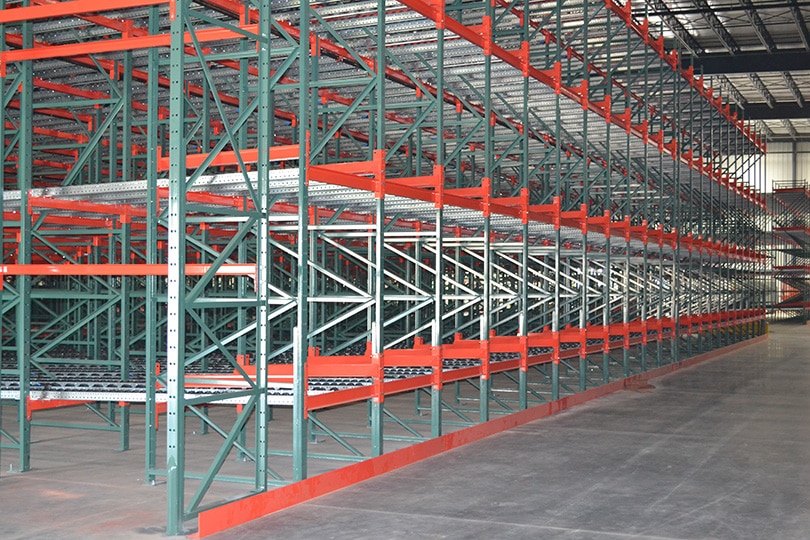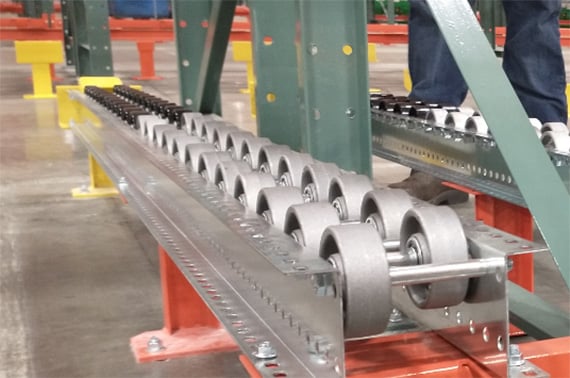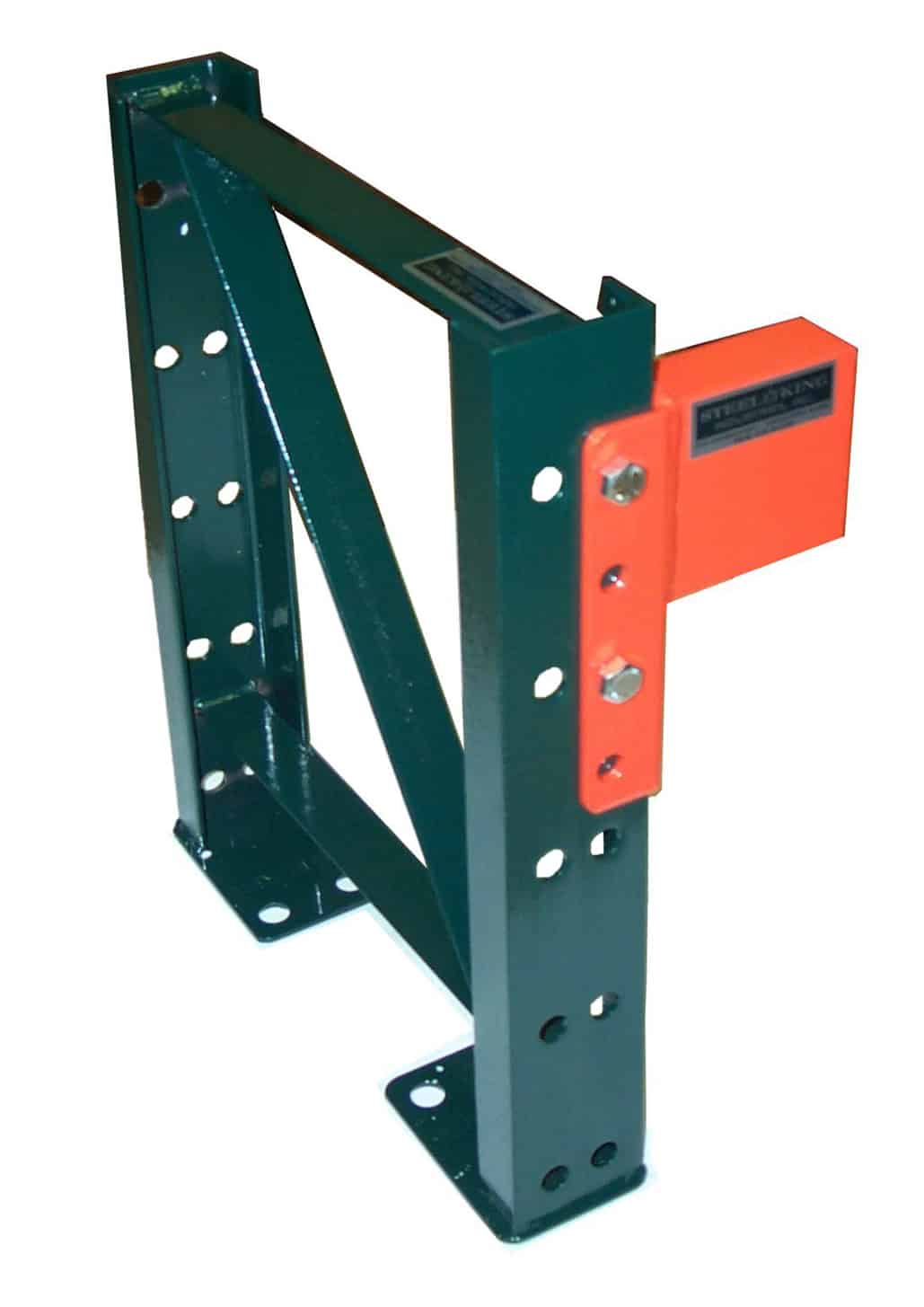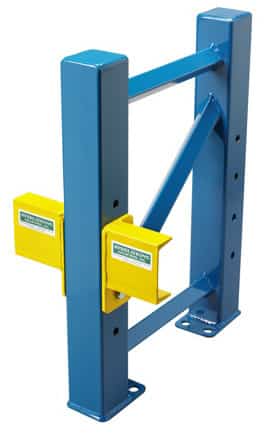Optimizing Warehouse Cold Storage Capacity and Longevity
Posted on Jan 7, 2021
Structural channel pallet flow systems outlast and outperform roll formed rack in cooler and freezer operations for one of the world’s largest food companies, with leading brands of chicken and prepared foods

Freezer and cooler storage pallet rack must withstand some of the greatest forklift abuse in warehouse material handling. This can be attributed to a number of factors including confined space, slick surfaces, and the cold temperatures ranging from 31° down to -20°F that slow driver reflexes and make impact more frequent.
As a result, typical roll formed rack – which a less expensive, lower strength option ideal for most standard warehouse storage applications – is often not the best match for freezer and cold storage. Since it can be subjected to increased impact and damage it can cause unnecessary downtime and require premature repair or replacement.
To optimize safety and operations, however, a growing number of food companies are opting for more rugged structural channel pallet flow systems. These not only help to maximize storage density in cooler and freezer warehouse storage but can also better withstand rough forklift handling with minimal maintenance or downtime. While the initial costs of structural channel are higher than traditional rack, its sturdy construction dramatically lowers the total cost of ownership.
Optimizing Freezer Storage
Recently at a Midwest cold storage facility, one of the world’s largest food companies, with leading brands of chicken and prepared foods, conducted an internal review of its material handling system. The results indicated that its roll-formed rack, after years of forklift impact, was in poor shape and would require a complete replacement.
In order to enhance safety and increase uptime, the company chose to upgrade to a more robust pallet flow system.

Pallet flow utilizes dynamic flow rails that sit at an angle within a static rack structure, allowing loads placed on one end to move by gravity on rollers to the unloading end, with speed controllers acting as gentle brakes. As a load is removed, the pallets behind it move forward automatically. Forklifts are required only for the initial loading and final unloading.
While pallet flow’s high-density, labor saving, first-in-first-out (FIFO) storage capacity can help to optimize storage and product rotation for food products, the confined freezer workspace takes its toll as forklifts inevitably impact the rack.
“The roll formed rack in their freezer was worn out, and needed to be replaced with rack that could withstand, prolonged high-volume use,” says David Scholtz, project manager at Cardinal Integrated Systems, the material handling systems integrator responsible for implementing new pallet flow systems. “We wanted rack that was structurally strong enough to withstand forklift impact,” says Scholtz.
On Cardinal Integrated Systems’ recommendation, the company turned to the SK3400 pallet flow system by Steel King Industries, a leading manufacturer of storage rack and material handling products.
Choosing the Right Rack
For greater impact resistance and longevity in the freezer environment, SK3000 pallet rack from Steel King, a rugged bolted rack with structural channel columns, was also selected.

Compared to typical racking, structural channel rack, constructed of hot-rolled structural channel columns with full horizontal-diagonal bracing, offers greater frame strength, durability and cross-sectional area. All grade-5 hardware provides greater shear strength, and a heavy 7-gauge wrap-around connector plate ensures a square and plumb installation with a tighter connection and greater moment resistance.
Such rugged structural channel rack construction can help provide greater reliability, longevity, and significantly lower total cost of operation to frozen and refrigerated food manufacturers.
Another benefit of structural rack for the food industry is that it can be designed as either an easy to clean, open channel rack or as an enclosed tubular rack.
 Steel King’s SK4000 tubular rack is a heavy-duty structural rack. Often, for the food industry, it is designed with column holes placed only where bolts will be inserted, therefore eliminating the possibility for the buildup of debris, further increasing sanitation. Steel King’s SK4000 tubular rack is a heavy-duty structural rack. Often, for the food industry, it is designed with column holes placed only where bolts will be inserted, therefore eliminating the possibility for the buildup of debris, further increasing sanitation. |
Because the pallet entry side of a flow system takes the most impact, Scholtz also placed steel wheels on the first 4’ of the pallet entry, to better withstand the impact. Since corrosion resistance was also important in the freezer environment, the rack was hot dipped galvanized. This is the process of dipping steel into a vat of molten zinc. During the process, the iron in the steel metallurgically reacts with the zinc to form an alloy coating with superior corrosion protection.
According to Scholtz, the pallet flow rack was installed in a couple of configurations, with 3” structural channel system rack. Two groups consist of five singlewide bays, each nine pallets deep and four beam levels high. One group consists of seven singlewide bays, nine pallets deep and four beam levels high.
To ensure that the flow systems worked properly with all of the global food company’s pallets, sample pallets were shipped to Steel King’s test facility. The pallets were loaded with simulated test weights of the minimum and maximum loads required. The pallets were tested to ensure they would safely, reliably flow at the proper speed and rack pitch.
According to Scholtz, after successful installation of the pallet flow systems at the food company’s facility, the company has enhanced its process to reliably ship frozen product in high-volume to meet domestic and overseas demand.
